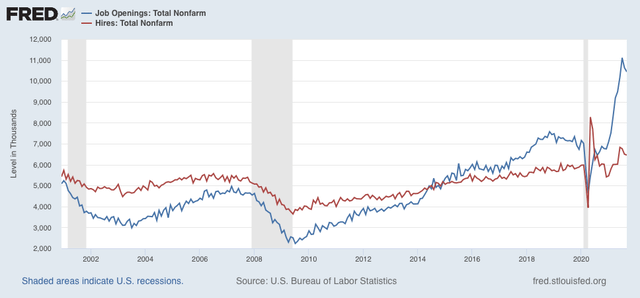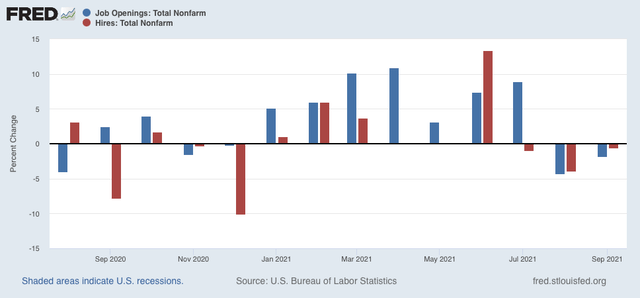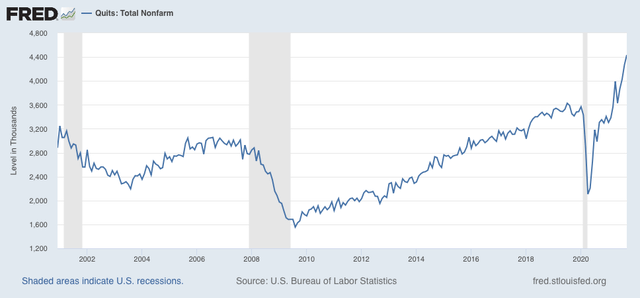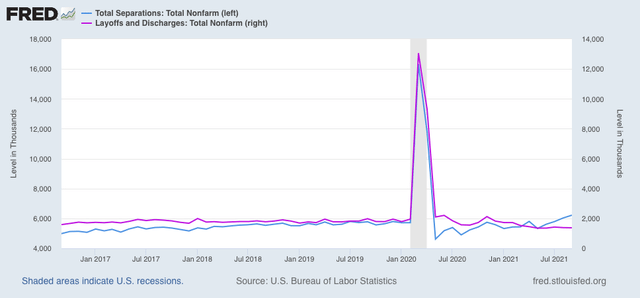- by New Deal democrat
This morning’s JOLTS report covers September, at the beginning of which the Delta wave peaked and then gradually receded for the remainder of the month. It is also the month that the last of pandemic emergency benefits ended.
We did see the second consecutive decline in job openings, as they decreased 191,000 to 10.438 million (blue in the graph below), while actual hiring (red) also decreased 38,000 to 6.459 million:

Here are the month over month percentage changes for each of those metrics since May of last year:

Since May, openings have increased a net of 955,000, while actual hires have increased 437,000.
Of a piece with the above, voluntary quits rose to yet another new record of 4.434 million:

The record number of people voluntarily quitting their jobs (meaning they are not eligible for unemployment benefits) is testimony to the record robustness of the jobs market despite the ending of emergency pandemic benefits.
Layoffs and discharges (violet, right scale) declined by 48,000 to 1.375 million which, after revisions to previous months’ data, is slightly above May’s record low of 1.353 million, while total separations (light blue, left scale) rose by 186,000 to 6.218 million, the highest since April of 2020, and higher than at any point during the last two expansions:

Two months ago I wrote that “this is a market that continues to be out of equilibrium and is searching for a new one.” We continue to make slow progress towards that equilibrium as openings slowly decline. The record number of quits and the continued near record low in layoffs and discharges nevertheless indicates that the market remains very tight and tilted in favor of labor over management (for the first time in over 20 years).
While the extra ‘cushion’ of saved emergency benefits appears to have been exhausted, the inability to find child care, or concerns about the safety of jobs on offer, remain likely factors as to why there are not more people actually seeking jobs.
As previously indicated, I do not believe that a new equilibrium in the jobs market will be reached until the COVID pandemic recedes at least into a tolerable background status. Based on the slow pace of the decline in jobs openings, it looks like that will take at least another year.